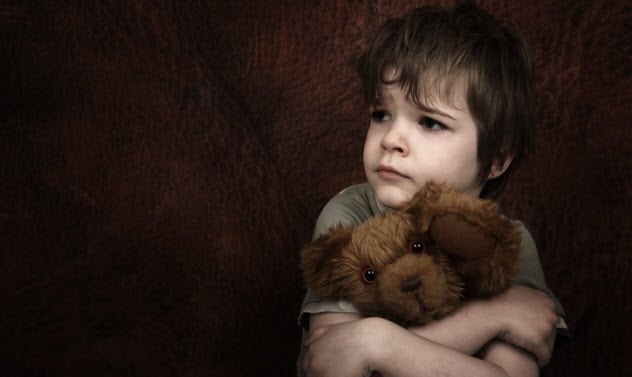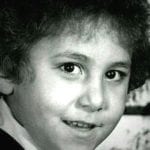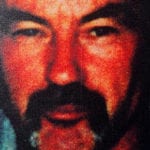 Technology
Technology  Technology
Technology  Humans
Humans 10 Everyday Human Behaviors That Are Actually Survival Instincts
 Animals
Animals 10 Animals That Humiliated and Harmed Historical Leaders
 History
History 10 Most Influential Protests in Modern History
 Creepy
Creepy 10 More Representations of Death from Myth, Legend, and Folktale
 Technology
Technology 10 Scientific Breakthroughs of 2025 That’ll Change Everything
 Our World
Our World 10 Ways Icelandic Culture Makes Other Countries Look Boring
 Misconceptions
Misconceptions 10 Common Misconceptions About the Victorian Era
 Mysteries
Mysteries 10 Strange Unexplained Mysteries of 2025
 Miscellaneous
Miscellaneous 10 of History’s Most Bell-Ringing Finishing Moves
 Technology
Technology Top 10 Everyday Tech Buzzwords That Hide a Darker Past
 Humans
Humans 10 Everyday Human Behaviors That Are Actually Survival Instincts
 Animals
Animals 10 Animals That Humiliated and Harmed Historical Leaders
Who's Behind Listverse?

Jamie Frater
Head Editor
Jamie founded Listverse due to an insatiable desire to share fascinating, obscure, and bizarre facts. He has been a guest speaker on numerous national radio and television stations and is a five time published author.
More About Us History
History 10 Most Influential Protests in Modern History
 Creepy
Creepy 10 More Representations of Death from Myth, Legend, and Folktale
 Technology
Technology 10 Scientific Breakthroughs of 2025 That’ll Change Everything
 Our World
Our World 10 Ways Icelandic Culture Makes Other Countries Look Boring
 Misconceptions
Misconceptions 10 Common Misconceptions About the Victorian Era
 Mysteries
Mysteries 10 Strange Unexplained Mysteries of 2025
 Miscellaneous
Miscellaneous 10 of History’s Most Bell-Ringing Finishing Moves
10 Childhood Warning Signs of a Serial Killer
Serial killers don’t just come out of nowhere. They often have a history of antisocial behavior throughout infancy and early adolescence. Psychiatrist Dorothy Lewis of New York University concluded that a murderer is made through a lethal combination of childhood abuse, neurological disturbances, and psychiatric illness.
As FBI profiler Jim Clemente explained, “Genetics loads the gun, their personality and psychology aim it, and their experiences pull the trigger.”
The following early warning signs are all attributed to some of the most cold-blooded and heartless serial killers ever known. If only someone would have seen it coming.
10 Bed-Wetting

The Macdonald triad was first suggested by psychiatrist J.M. Macdonald in his 1963 paper, “The Threat to Kill.” Macdonald had compared 48 psychotic patients with 52 nonpsychotic patients who all displayed violent tendencies. The research suggested that three particular behaviors in early childhood “figure prominently in the ranks of serial murderers.”
One of those behaviors was enuresis (bed-wetting). Although this is common in childhood, it would become a concern if the bed-wetting continued twice a week for at least three consecutive months after age 5. The child might become humiliated or frustrated by his constant bed-wetting as many parents would ridicule a child for this behavior.[1]
Serial killer Albert Fish, who was responsible for three child murders in the early 1900s, was a known bed-wetter until age 11. Donald “Pee Wee” Gaskins Jr., who claims to have killed more than 100 people—although he was only convicted of nine murders—also was a persistent bed-wetter throughout his childhood.
9 Arson

Macdonald also theorized that arson, or fire-setting, was another early behavioral trait that could be linked to violent tendencies later in life. Fire-setting is a potential warning sign that you have a murderer in the making on your hands as he is looking to destroy anything he can.
Serial killer Ottis Toole, who was convicted of six counts of murder, was also a serial arsonist from a young age and admitted to being sexually aroused by fire. The sinister American drifter claimed that he drew a sense of excitement from seeing the flames—the bigger the flames, the bigger the thrill.[2]
Toole had a troubled childhood. He has often spoken about suffering sexual abuse at a young age. His Satanist grandmother also exposed him to many dark rituals, including self-mutilation.
The setting of fires is linked to a mixture of emotions, including power, excitement, and revenge. Toole might have enjoyed experiencing all three when he was a helpless child.
8 Harming Small Animals

The third behavior in the Macdonald triad is harming small animals. Young children who pull on a dog’s tail or yank at a cat’s whiskers are not necessarily out to harm the animal. They are more likely to act out of curiosity.
Mistreatment of animals, including repeated violence without remorse, is linked to troubled children who later become serious offenders in their adult lives. Sixty percent of children who have suffered previous abuse themselves have turned to mistreat animals.[3]
Serial killer Edmund Kemper—who butchered his own mother, his mother’s best friend, six female students, and his own paternal grandparents—started torturing animals from a young age. At 10 years old, he buried his cat alive. Then he dug it up and displayed the head on a spike as a “trophy.” At age 13, he used a machete to chop off the head of his replacement cat.
Writer Harold Schechter noted, “Animal torture isn’t a stage. It’s a rehearsal.”
7 Head Injury

A study found that the majority of notorious serial killers had suffered head injuries in childhood. Elaine Whitfield Sharp, defense attorney and expert in head trauma cases, said that these early injuries are connected to a lack of empathy in later life. She explained, “It doesn’t matter whether the frontal lobe damage is psychiatric or traumatic. The result is the same. Gross lack of empathy.”[4]
Richard Ramirez (aka the “Night Stalker”) had a dresser fall on his head, and he needed 30 stitches when he was just five. John Wayne Gacy Jr. (aka the “Killer Clown”) suffered from blackouts when a swing struck his head at age 11.
When David Berkowitz (aka “Son of Sam”) was eight, he was hit on the head with a pipe, causing a 10-centimeter (4 in) gash. Albert Fish (aka the “Boogeyman”) suffered severe head trauma when he fell from a tree at age seven. Dennis Rader (aka the “BTK Killer”) also stated that his mother had accidentally dropped him on his head as an infant.
6 Uncontrollable Aggression

One of the first signs of psychopathy in adolescence is extreme antisocial behavior such as persistent aggression. The Institute of Psychiatry stated that about five percent of children have a severe level of antisocial behavior, which later develops into psychopathy. For 30 percent of children displaying this behavior, it can be attributed to genetics. For others, it’s due to a difficult, traumatic, or neglectful upbringing.[5]
One example of early psychopathy occurred when Ted Bundy was three years old. He had already begun to show an interest in knives. His aunt recalled a young Bundy pulling back her bedsheets as she slept and slipping three butcher knives beside her.
Serial killer Carroll Cole committed his first murder when he drowned a school friend in a lake. He later confessed to the killing, which was believed to have been an accident until then.
5 Witnessing Extreme Violence

Children who witness violence, either as victims or as observers, can become desensitized in the long term. Those who are affected can adopt the perception that violence is an acceptable way to solve problems.
Criminologist Dr. Adrian Raine explained that both biological and social factors surrounding violence in childhood contribute to antisocial behavior in adolescence. In his book, The Anatomy of Violence, he explained, “Genetics and environment work together to encourage violent behavior.”[6]
Most notable was the severe violence witnessed in childhood by serial killer Richard Ramirez. His older cousin, Miguel Ramirez, had returned from the Vietnam War and told a young Richard details of the torture and mutilation of Vietnamese women. Miguel even showed him photographic evidence of what the victims endured.
When Richard was 13 years old, he witnessed Miguel murder his wife. Before Richard Ramirez was captured in 1985, he murdered at least 13 people and tortured dozens more, earning him the name “The Night Stalker.”
4 Antisocial Behavior

Serial killers have a strong tendency toward antisocial behavior. Many children are outgoing and make friends easily; however, some tend to be loners or prefer to play by themselves. This by no means that your child will become a serial killer if they choose to be by themselves. Antisocial behavior on its own is not an indicator. Some children, though, may change from being extremely social to extremely anti-social. This is what occurred with Jeffrey Dahmer. He was a very social child until his family moved to Ohio for his father’s new job. There, he regressed—allegedly after being sexually molested—and began focusing his attention on dissecting roadkill rather than developing new friendships.
Antisocial behavior can also develop into a disorder—antisocial personality disorder or ASPD. This is a mental condition in which a person has a long-term pattern of manipulating, exploiting, or violating the rights of others without any remorse. The cause is unknown, but a person’s genes and other factors, such as child abuse, may develop this condition. People with an antisocial or alcoholic parent can be at increased risk.
Ed Gein, the inspiration for Psycho’s Norman Bates and Silence of the Lambs’ Buffalo Bill, had no social connections besides his extremely religious and abusive mother. She punished him whenever he tried to make friends. After she died in 1945, Gein began to murder and dig up graves, collecting body parts of women who looked like his mother and trying to make a “woman suit.”
3 Early Promiscuity And Voyeurism

Childhood voyeurism and early promiscuity are common traits among notorious serial killers. Engaging intimately with others, behavior that included undressing in public or being a “Peeping Tom,” are also traits connected to antisocial behavior.
Criminologist Eric Hickey stated in Serial Killers and their Victims, “The fact [that] certain serial murderers have insisted that pornography was a major factor in their killing young women and children cannot be ignored.” He explained that the four steps are addiction to the images, an increased appetite for those images, desensitization to the violence, and acting out the images.[8]
Ted Bundy confessed that he would look through the windows of neighbors who might be caught undressing when he was a young boy. In his final interviews, he admitted that pornography had an impact on his violent tendencies: “Pornography can reach in and snatch the kid out of any house today. It snatched me out of my home.”
2 Manipulation And Callousness

Parents who are manipulated by their children are often locked in a power struggle, much like a tug-of-war. The more the parents attempt to control the child, the more the child will act up.
Behavior such as compulsive lying, destruction of toys, emotional blackmail, or violent tantrums are tactics an antisocial child might apply as a means to control his parents. Psychologist Robert D. Hare, who created the Hare Psychopathy Checklist, notes that cunning and manipulative behavior are one of the signs of psychopathy.[9]
In another study, researchers focused on callous-unemotional (CU) pre-psychopathic behavior and asked parents questions about their child’s deceitful-callous (DC) behavior. The five items considered DC behavior are: The child doesn’t seem guilty after misbehaving, punishment doesn’t change behavior, the child is selfish/won’t share, the child lies, and the child is sneaky and tries to get around his parents.
The study found that toddlers who rated high on the DC scale developed significant behavior problems later in life.
1 Fantasies

When a child is told that he “always has his head in the clouds,” it’s often just a harmless jibe, yet what might go unnoticed is just how far the child is willing to delve into his fictional world.
Fantasy can relieve fear and anxiety. But other compulsive forms of escapism are often seen among children who have suffered abuse, neglect, or trauma. The fantasy will play like a loop—which the child will happily return to for his own satisfaction—much like a serial killer’s desire to claim victim after victim.
Serial killer Edmund Kemper confessed, “I knew long before I started killing that I was going to be killing; that it was going to end up like that. The fantasies were too strong. They were going on for too long and were too elaborate.”[10]
Jeffrey Dahmer and David Berkowitz also revealed that they had periods of intense fantasies throughout their youth. Most serial killers have already imagined their first murder in great detail long before they’ve fully committed to the idea.
Cheish Merryweather is a true crime fan and an oddities fanatic. Can either be found at house parties telling everyone that Charles Manson was only 157 centimeters (5’2″) or at home reading true crime magazines. Twitter: @thecheish
Read more chilling stories about serial killers on 10 Serial Killers On Why They Did It, In Their Own Words and 10 Far-Out Facts And Strange Stories About Serial Killers.








